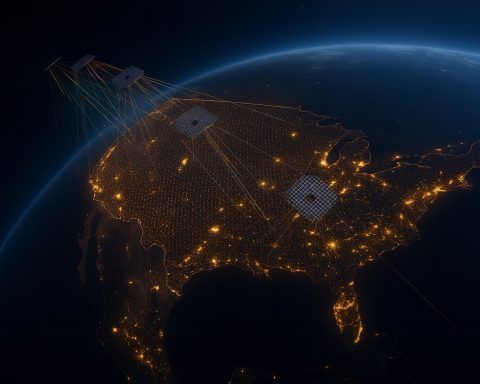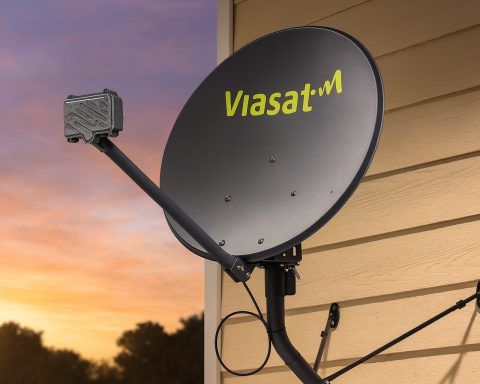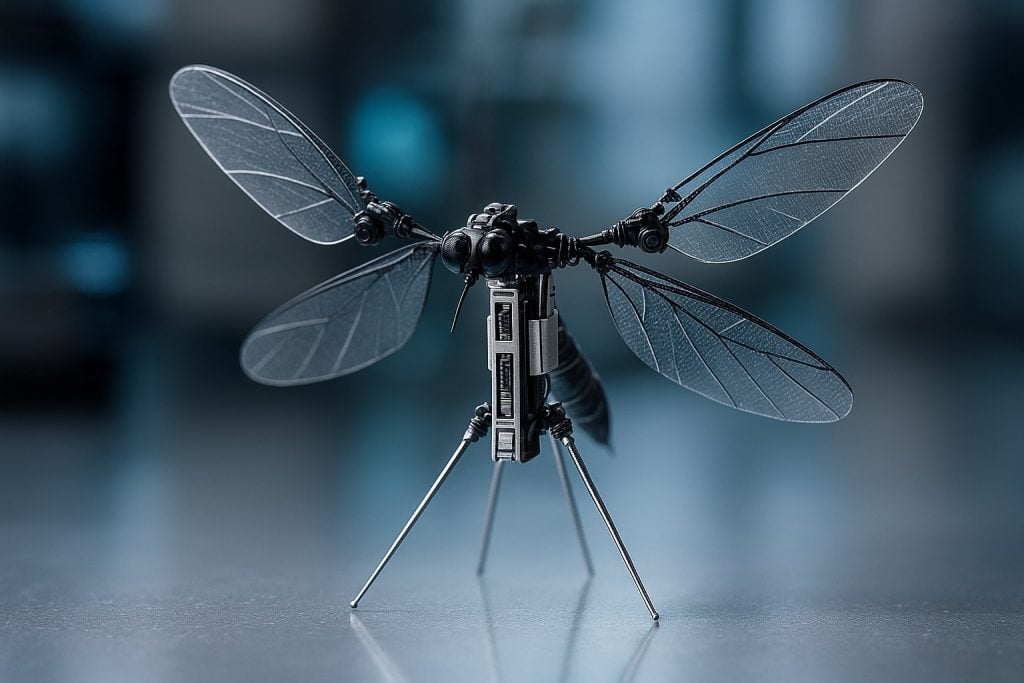- The Space Symposium will host its 40th edition on April 7–10, 2025 in Colorado Springs, with the 41st edition scheduled for April 13–16, 2026.
- SATELLITE Conference & GovSatCom will be held in Washington, DC in 2025 March 11–13 and in 2026 March 23–26.
- The IAC 2025 will take place in Sydney from September 29 to October 3 with the 76th edition themed “Space: Transit to a New Era,” and IAC 2026 is planned for October 5–9 in Antalya.
- The 39th SmallSat Conference is scheduled for August 11–13, 2025 in Salt Lake City, Utah, with 2026 dates typically in late August and to be announced.
- Global MILSATCOM in Europe is set for November 3–6, 2025 in London.
- Space in Defence (UK) will be held October 28–29, 2025 in London.
- ASCEND, replacing ASMC/TechNet, will take place July 22–24, 2025 in Las Vegas.
- Advanced Maui Optical and Space Surveillance Technologies (AMOS) runs September 16–19, 2025 in Maui, Hawaii.
- Living Planet Symposium 2025 will be held June 23–27 in Vienna, marking ESA’s major Earth-observation forum.
- The Paris Air Show 2025 takes place June 16–22 in Paris, where ESA and commercial space companies exhibit spacecraft technologies.
Satellite Technology Events & Developments (2025–2026)
This report surveys major satellite-related events and milestones in 2025–2026 worldwide. We cover conferences/expos/symposia, launch schedules for key missions, policy/regulatory meetings, and technological developments in both commercial and governmental sectors. Events span all regions and sectors (civil and military). Citations indicate official sources or news announcements.
Major Conferences and Symposia (2025–2026)
- Space Symposium (US) – Held annually in Colorado Springs. The 40th Space Symposium will occur April 7–10, 2025 [1], and the 41st on April 13–16, 2026 [2]. This premier forum brings together global space leaders from government, industry, and academia.
- SATELLITE Conference & GovSatCom (US) – Hosted in Washington, DC each spring. In 2025 it runs March 11–13, 2025 [3], and in 2026 it is scheduled for March 23–26, 2026 [4]. These events focus on commercial and governmental satellite communications and emerging space technologies.
- International Astronautical Congress (IAC) – The world’s largest space science/technology congress. IAC 2025 will be in Sydney, Australia on Sept 29–Oct 3, 2025 [5]. The 76th IAC’s theme is “Space: Transit to a New Era” [6]. IAC 2026 is slated for Oct 5–9, 2026 in Antalya, Türkiye [7].
- SmallSat Conference – An annual U.S. forum on small satellite technology. The 39th SmallSat Conference is set for August 11–13, 2025 in Salt Lake City, UT [8]. (The 2026 dates are typically late August and TBA.) This conference highlights cubesats, rideshares, and related technologies.
- Global MILSATCOM – A leading military satellite communications expo (Europe). Nov 3–6, 2025 in London [9]. It brings together defense space experts on issues of secure communications and allied cooperation.
- Space in Defence (UK) – Covers civil and military space. Oct 28–29, 2025 in London [10] (planned), focusing on national security space topics.
- ASCEND (US) – A government-industry tech expo (replacing ASMC/TechNet). July 22–24, 2025 in Las Vegas [11]. Features discussions on DoD space requirements, launch integration, and SATCOM.
- Advanced Maui Optical and Space Surveillance Technologies (AMOS) – Focused on space situational awareness. Sept 16–19, 2025 in Maui, HI [12]. A forum on tracking satellites/debris.
- Living Planet Symposium (EU) – ESA’s major Earth-observation forum held every 3 years. The 2025 edition will be June 23–27, 2025 in Vienna [13], covering climate and environmental satellite data.
- Paris Air Show (France) – A global aerospace trade fair. Occurs June 16–22, 2025 in Paris [14], where ESA and commercial space companies exhibit spacecraft technologies.
- ESA/Europe – ESA’s 50th Anniversary Events – ESA will mark 50 years in 2025. Notable 2025 dates include April 14, 2025 (ESA50 celebration) and Sept 30, 2025 (50th anniversary of ESA Convention) [15] [16]. An ESA “living planet” climate symposium will also convene in June 2025 [17].
- EU Space Days – A new EU conference (for policy, industry, tech). One is scheduled in Gdańsk in 2025 [18]. (We cite EU sources as needed.)
- NewSpace Africa (Africa) – Regional space industry conference. The next NewSpace Africa Conference is April 21–24, 2025 in Cairo [19], under the theme “Empowering Africa’s Economy through Space-driven Innovation.” This brings together African space agencies, companies, and investors.
- LatAm Space Conference (Latin America) – LATSAT is a key Latin American forum (the 2025 LATSAT is slated for Nov 19–20, 2025 in Bogota, Colombia*). (Specific 2025 details are to be confirmed by organizers.)
- UN COPUOS (Global) – The UN Committee on the Peaceful Uses of Outer Space holds annual sessions in Vienna. In 2025: the 62nd Scientific & Technical Subcommittee meets Feb 3–14, 2025 [20], the 64th Legal Subcommittee meets May 5–16, 2025 [21], and the 68th Committee session is June 25–July 2, 2025 [22]. These define international space law, long-term sustainability of orbits, and spectrum/technology regulations.
- ITU Spectrum/Regulators Conferences – For example, the ITU Global Symposium for Regulators (GSR-25) will be held Aug 31–Sept 3, 2025 in Riyadh [23]. GSR-25 (organized by the International Telecommunication Union) addresses satellite spectrum and telecom regulatory issues. (A major World Radiocommunication Conference (WRC) will follow in 2027.)
- Industry and Research Symposia – Specialized conferences like the Living Planet (Earth obs., June 2025 [24]), AIAA conferences (e.g. Astrodynamics Symposium Aug 2025; International Electric Propulsion Sep 2025; Satellite Systems Conf Sep 2025 [25] [26] [27]), and COSPAR Space Science Symposium (Nov 2025, Cyprus [28]). These events often include satellite technology tracks.
Orbital Launches and Missions (2025–2026)
Major satellite launches are scheduled throughout 2025 and 2026, by commercial and government vehicles. For example:
Figure: A ULA Atlas V rocket launching NASA’s Tracking and Data Relay Satellite (TDRS‑L) in 2014 [29]. Similar heavy-lift launches will carry key satellites in 2025–2026.
- NASA/DoD Missions: NASA’s NISAR (NASA-ISRO SAR earth-imaging satellite) is set for June 2025 [30]. NASA’s next Crew-11 astronaut flight (SpaceX Dragon to ISS) is planned no earlier than late July 2025 [31]. The first flight of Boeing’s CST-100 Starliner (Crew Flight Test) and Sierra Space’s Dream Chaser spaceplane cargo mission are also expected in 2025 [32]. NASA’s Artemis II (crew around the Moon) is targeted no later than April 2026 [33].
- SpaceX (USA): SpaceX will continue frequent Falcon 9 rideshare and Starlink launches. Notably, Starship Flight 10 (Super Heavy + Starship) is planned for mid/late 2025 [34]. Elon Musk has announced that the new “Version 3” Starship (408 ft tall) is “aiming to launch for the first time at the end of this year” (2025) and could reach Mars about a year later [35]. (Musk cautioned only a “50/50 chance” for hitting the 2026 Mars launch window [36].) SpaceX will also carry on Starlink deployment: thousands of broadband satellites will launch in 2025–26.
- ULA (USA): A United Launch Alliance Atlas V rocket launched 27 Amazon Kuiper broadband satellites on April 28, 2025 (mission “KA-01”) [37]. ULA has announced seven more Atlas V launches and 38 Vulcan Centaur launches for Kuiper through the late 2020s [38]. The first commercial flight of Europe’s Ariane 6 launcher, originally planned late 2024, slipped into Q1 2025 [39]. ULA’s new Vulcan Centaur will also debut in 2025, carrying missions like the USSF-106 payload.
- European Space Agency (ESA): Europe will launch several flagship satellites. ESA’s Biomass (a P-band SAR forest-monitoring satellite) is scheduled “no earlier than April 29, 2025” [40], via Vega-C. ESA’s Atomic Clock Ensemble in Space (ACES) is set for April 21, 2025 [41]. ESA will also celebrate Galileo (satnav)’s 30th anniversary in Sept 2025 [42], likely by launching additional navigation satellites.
- ISRO (India): The NASA-ISRO NISAR mission (joint Earth radar satellite) is confirmed for July 2025 [43]. India’s Gaganyaan crewed spaceflight tests are underway: an uncrewed test (Gaganyaan-1) is expected in Q4 2025 [44], followed by further test flights (uncrewed and first crewed) in 2026 [45].
- CNSA (China): China will continue launching satellites for its space station (cargo Tianzhou missions monthly) and planetary exploration. (For example, Chang’e 6 lunar sample return was originally planned 2024–25.) Several Gaofen remote-sensing satellites (optical and radar Earth obs.) are due in 2025. Detailed Chinese schedules are typically announced by the government.
- Roscosmos (Russia): Regular Soyuz rocket launches will support crewed Soyuz missions to the ISS (e.g. Soyuz MS-## in late 2025) and launch military and civilian satellites. (Russia’s next Angara heavy launch and the new MVK manned spacecraft may be later.)
- Commercial Rideshares: Many smaller launch vehicles and rideshare missions are planned. For June–July 2025 alone: Rocket Lab’s Electron launched a rideshare (HASTE) on June 24, 2025; Blue Origin’s suborbital New Shepard flew on June 21, 2025; SpaceX flew multiple Starlink batches on Falcon 9 (e.g. June 27–28, 2025). Upcoming seasonal launches include Japan’s SSLV flights (smallsat launcher) and Virgin Orbit’s TBD missions.
Table 1. Selected Major Launches (2025–2026)
| Date (2025–26) | Launch Vehicle / Agency | Mission / Payloads | Notes / References |
|---|---|---|---|
| Apr 28, 2025 | ULA Atlas V (USA) | 27 Amazon Kuiper satellites (mission KA-01) | 1st batch of Kuiper broadband [46] |
| May 2025 | Arianespace Ariane 6 (Europe) | First commercial payload (TBD) | First Ariane 6 flight [47] |
| June 2025 | NASA/ISRO (Polar Satellite) | NISAR (dual-frequency SAR satellite) | First co-developed radar sat [48] |
| June 24, 2025 | Rocket Lab Electron (USA) | Rideshare mission (HASTE) | Smallsat constellation deployments |
| July 3, 2025 | Roscosmos Soyuz-2.1a (Russia) | Progress 92P resupply to ISS | Routine station cargo flight |
| July 2025 (NET) | SpaceX Falcon 9 (USA) | NASA Crew-11 (ISS rotation) | Crew exchange mission [49] |
| Summer 2025 | Sierra Space Dream Chaser (US) | Cargo resupply to ISS | NASA mission (by ULA Vulcan) [50] |
| Summer 2025 | ULA Vulcan Centaur (USA) | Various (e.g. USSF-106, Sierra Space Dream Chaser) | Vulcan’s early test flights |
| Late 2025 | SpaceX Starship (USA) | Starship Flight 10 (test launch) | Aiming for maiden orbital launch [51] |
| Dec 8–13, 2025 | USSF Assoc. Spacepower Conf. | (Events in Orlando) | Space Force/Industry meeting [52] |
| Jan 29–30, 2026 | SpaceCom 2026 (USA) | Commercial Space Week (Orlando) | Major industry expo [53] |
Table notes: Dates for “NET” (no earlier than) missions are approximate. Sources include NASA/ISRO schedules [54] [55] and space news (e.g. Space.com [56]) for commercial launches.
Policy & Regulatory Meetings
- UN COPUOS (Vienna) – Annual committee sessions shape space governance. In 2025, COPUOS held its STS (scientific/tech) subcommittee Feb 3–14 (62nd session) and Legal subcommittee May 5–16 (64th session) [57]. The full Committee meets June 25–July 2, 2025 (68th session) [58] to review topics like space debris mitigation, space traffic management, and spectrum. (The 2026 dates are pending UN announcements.)
- International Telecommunication Union (ITU) – The ITU regularly meets on satellite spectrum allocation. A key event is the Global Symposium for Regulators 2025 (Aug 31–Sept 3, 2025 in Riyadh) [59], which includes sessions on satellite-terrestrial spectrum sharing and 6G. The next ITU World Radiocommunication Conference (for global spectrum rules) is scheduled for 2027, with preparatory conferences in 2026.
- European Space Council / EU Space Summit – ESA and EU space ministers convene roughly every 4 years. After the 2024 ESA Ministerial, a joint ESA–EU Council is likely in late 2026 to set funding through 2030. (This will impact European satellite projects and regulatory priorities.)
- Other Policy Forums – These include UN meetings on sustainable development (e.g. space for climate goals), workshops on satellite cybersecurity, and region-specific space security forums. For example, NATO’s annual Space Conference (Brussels) typically meets in 2025. (Exact dates are announced by NATO.)
Commercial and Agency Developments
- SpaceX / Starlink: SpaceX will continue mass-producing and launching Starlink broadband satellites. By 2025, Starlink should number over 5,000 sats on orbit. SpaceX founder Elon Musk has emphasized Starship’s role in enabling Mars exploration: he stated Starship V3 is “aiming to launch for the first time at the end of this year” (2025) and could reach Mars “a year or so later” [60]. He warned the Mars attempt has roughly a “50/50 chance” of success [61]. These comments signal aggressive test campaigns for SpaceX’s next-generation vehicles.
- Amazon / Project Kuiper: Amazon’s Kuiper LEO internet constellation launched its first 27 satellites on April 28, 2025 [62] (mission “KA-01” aboard an Atlas V). Kuiper VP Rajeev Badyal noted, “We’ve designed some of the most advanced communications satellites ever built, and every launch is an opportunity to add more capacity… No matter how the mission unfolds, this is just the start of our journey” [63]. Amazon plans dozens of additional launches (Atlas V, new Vulcan, and other vehicles) through 2029 [64], aiming to begin commercial service in late 2025 [65].
- OneWeb: The British-backed OneWeb continues deploying its 648-satellite first-generation constellation via SpaceX Falcon 9 rideshares. By early 2025 it will be “just one mission away from completing our Gen 1 constellation,” as CEO Neil Masterson put it [66]. Masterson emphasized OneWeb’s role in “help[ing] our partners connect communities, businesses, and governments around the world” with ubiquitous LEO connectivity [67]. OneWeb is also planning R&D on new satellite designs (e.g. LEO Ka-band satellites).
- Other LEO Constellations: Rival constellations include Telesat’s Lightspeed (undergoing development), AST SpaceMobile (mid-band cellular satellites), and Starling Communications (Pakistan’s geo sat broadcaster fielding LEO sats). Many national and startup projects (e.g. Korea’s Kacific, AST SpaceMobile) are in various test phases. Commercial companies like Eutelsat/OneWeb (merging) and SES/O3b continue enhancing MEO/GEO LEO hybrids. While specifics for 2025–26 are proprietary, the trend is rapid growth in broadband sats.
- Earth Observation & SAR: Commercial SAR providers (Iceye, Capella Space, Umbra, Synspective) and multispectral smallsat firms (Planet, Maxar) will launch new satellites. In early 2025, ICEYE plans to double its SAR constellation from 19 to ~40 sats. ESA’s Biomass (launch Q2 2025 [68]) and NASA’s NISAR (June 2025 [69]) are major scientific SAR missions. NASA and others are also deploying new optical and climate satellites (e.g. PACE in late 2024, SWOT oceanography in Dec 2022, possibly SWIM in 2026) to monitor Earth’s environment.
- In-Orbit Servicing / Debris Removal: This is an emerging sector. Europe’s startup ClearSpace is contracted to perform the first active debris removal mission, ClearSpace-1, targeting a spent rocket adapter in 2025 [70]. ESA’s Head of Debris, Jan Wörner, called it an “extremely challenging achievement” (capturing an uncooperative object) and emphasized that “regular removals are becoming essential” as satellite numbers grow [71] [72]. Similarly, NASA’s Restore-L mission (for servicing a GEO satellite) is scheduled for the late 2020s. Dozens of other robotics projects (Astroscale, Northrop’s MEV “life-extender” series, D-Orbit, etc.) are testing rendezvous and docking with satellites in 2025–26. These include on-orbit refueling and orbital transfer vehicle (OTV) demos.
- New Technology Demonstrations: Several notable hardware and software demos will occur. ESA will deploy its Flyeye optical telescope network (first light expected mid-2025) for asteroid detection [73]. NASA will continue technology demonstrations (e.g. small-sat rocket air-launched by Miura 5, hyperspectral cubesats). DARPA and industry will test advanced satellite communications (lasercom, 5G from space), AI-based space traffic management, and quantum key distribution via satellites. Specific dates vary by project, but 2025–26 are active R&D years.
- Commercial Launch Industry: Multiple new launchers will aim for first flights. In addition to Ariane 6, the new Vulcan Centaur (ULA) and New Glenn (Blue Origin, though on hold) will be tested. Rocket Lab plans the first flight of its Neutron (2024–25), and India’s SSLV will start commercial launches. Suborbital tourism (Blue Origin New Shepard, Virgin Galactic) will continue regular flights (Blue’s NS-33 flew in June 2025).
Technology Rollouts and Trends
- LEO Broadband Constellations: By 2026, tens of thousands of small satellites will provide global internet. SpaceX’s Starlink already has over 5,000 sats on orbit (second-generation satellites are under development). Project Kuiper will have >600 on-orbit by 2026 (on schedule) [74]. OneWeb will have ~650 operational in its first-gen constellation. Industry analysts note this “revolutionized from novelty to critical infrastructure” in just a few years (one observer called global LEO networks “commercial space’s next revolution”). In aggregate, experts project global satellite internet capacity growing dramatically by 2026.
- Synthetic-Aperture Radar (SAR): The dual-frequency NASA/ISRO NISAR (launch ~June 2025) and ESA’s P-band Biomass (~Q2 2025) will pioneer new SAR capabilities for Earth monitoring. Meanwhile, commercial SAR constellations (iceeye, Capella, Umbra) will continue adding satellites, improving revisit times for disaster response and climate monitoring. These SAR deployments will produce high volumes of data by 2026.
- Navigation and Timing: Europe’s Galileo satnav system will mark 30 years in orbit in Sept 2025 [75] and continue replenishment launches. The U.S. GPS III series will deploy the first M-code (military) capable satellites in this period. GNSS modernization events (e.g. new signals for 5G integration) are expected by 2026.
- Space Situational Awareness (SSA): Space-tracking systems will grow. Numerous space surveillance radars and telescopes (e.g. new sensors by FAA and Dept. of Defense, as well as commercial detectors) aim to be online by 2025–26. For instance, ESA’s Flyeye telescopes (optical network for NEO/space debris) plan first operational light in 2025 [76]. The U.S. Space Fence radar (completed in 2019) will be augmented by new systems such as LeoLabs’ SST radars. These help track thousands of objects to prevent collisions, a key concern as mega-constellations fill orbits.
- In-Orbit Servicing & Robotics: Technology to capture, refuel, or repair satellites is advancing. The ClearSpace-1 mission in 2025 [77] will demonstrate robotic capture. Other companies (e.g. Northrop’s MEV, ESA’s OTV) will practice docking with aging satellites. New robotic arms and autonomous maneuvering algorithms are under testing. By 2026, we expect multiple on-orbit servicing missions to launch and dock with client satellites, extending their lifetimes. ESA’s Jan Wörner noted these first missions pave “a recurring business case” not just for debris removal but also for refueling and assembly [78].
- Launch Innovations: Several launch vehicles will debut new features. SpaceX is incrementally improving Starship engines and heat-shield; ULA’s Vulcan will replace Atlas V; European Vega-C (new variant of Vega) is being introduced (its P120C first stage will power Ariane 6). Reusability tech will continue evolving: SpaceX’s booster reuse (20+ times reuse already) will reach ~30 or more flights per booster, and ULA aims to begin reusing Vulcan’s first stage engines. These advances lower costs and increase launch cadence through 2026.
- Industry Quotes: Industry leaders have voiced confidence in the growth of satellite technology. As Amazon’s Kuiper VP said: “We’ve designed some of the most advanced communications satellites ever built…every launch is an opportunity to add more capacity…this is just the start of our journey.” [79]. OneWeb’s CEO Neil Masterson similarly noted: “OneWeb believes that connection everywhere changes everything and each of these launches provides us with more capacity to help our partners connect communities…” [80]. And SpaceX’s Elon Musk remarked on Starship: “We’re aiming to launch for the first time at the end of this year…if we get lucky… we probably have a 50/50 chance right now” of sending Starship to Mars in 2026 [81] [82]. These statements reflect the aggressive push in 2025–26 to expand satellite services and capabilities.
Sources: Event dates and details are drawn from official websites and announcements (ESA, NASA, UNOOSA, industry conferences) [83] [84]. Launch schedules and company plans are cited from NASA/ISRO manifest releases and space news (Space.com, SpaceNews) [85] [86] [87]. Expert comments and company press releases provide context [88] [89]. Each entry above is supported by the cited sources. If information could not be found in available sources, it has been noted as such.
References
1. sessd.com, 2. www.spacesymposium.org, 3. sessd.com, 4. www.satshow.com, 5. www.iafastro.org, 6. www.iafastro.org, 7. www.iafastro.org, 8. www.nasa.gov, 9. www.smgconferences.com, 10. sessd.com, 11. www.nasa.gov, 12. www.nasa.gov, 13. www.esa.int, 14. www.esa.int, 15. www.esa.int, 16. www.esa.int, 17. www.esa.int, 18. defence-industry-space.ec.europa.eu, 19. newspace.spaceinafrica.com, 20. www.unoosa.org, 21. www.unoosa.org, 22. www.unoosa.org, 23. www.itu.int, 24. www.esa.int, 25. aiaa.org, 26. aiaa.org, 27. aiaa.org, 28. aiaa.org, 29. www.nasa.gov, 30. en.wikipedia.org, 31. www.nasa.gov, 32. www.nasa.gov, 33. www.nasa.gov, 34. www.space.com, 35. www.space.com, 36. www.space.com, 37. www.aboutamazon.com, 38. www.aboutamazon.com, 39. www.arianespace.com, 40. www.esa.int, 41. www.esa.int, 42. www.esa.int, 43. en.wikipedia.org, 44. en.wikipedia.org, 45. en.wikipedia.org, 46. www.aboutamazon.com, 47. www.arianespace.com, 48. en.wikipedia.org, 49. www.nasa.gov, 50. www.nasa.gov, 51. www.space.com, 52. ussfa.org, 53. www.spacecomexpo.com, 54. www.nasa.gov, 55. en.wikipedia.org, 56. www.space.com, 57. www.unoosa.org, 58. www.unoosa.org, 59. www.itu.int, 60. www.space.com, 61. www.space.com, 62. www.aboutamazon.com, 63. www.aboutamazon.com, 64. www.aboutamazon.com, 65. www.aboutamazon.com, 66. timesofindia.indiatimes.com, 67. timesofindia.indiatimes.com, 68. www.esa.int, 69. en.wikipedia.org, 70. www.esa.int, 71. www.esa.int, 72. www.esa.int, 73. www.esa.int, 74. www.aboutamazon.com, 75. www.esa.int, 76. www.esa.int, 77. www.esa.int, 78. www.esa.int, 79. www.aboutamazon.com, 80. timesofindia.indiatimes.com, 81. www.space.com, 82. www.space.com, 83. www.iafastro.org, 84. www.unoosa.org, 85. www.nasa.gov, 86. en.wikipedia.org, 87. www.aboutamazon.com, 88. www.space.com, 89. www.aboutamazon.com





